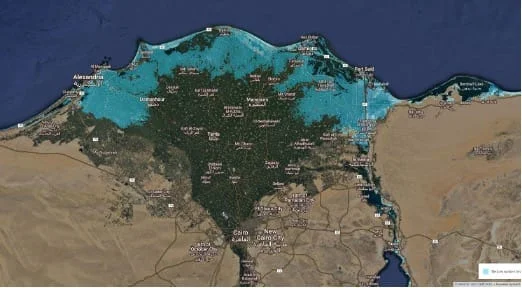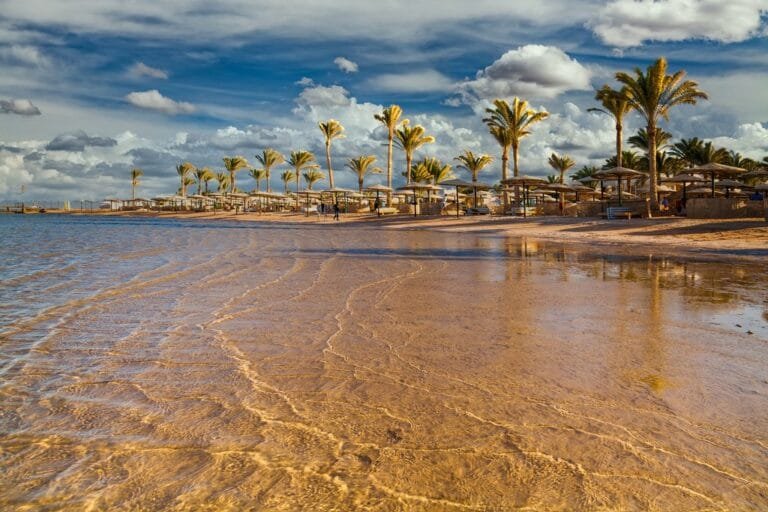The Nile Valley Climate
The Nile Valley, which stretches from Cairo to Aswan, has a semi-arid climate. The area receives very little rainfall and experiences very hot summers, but winter temperatures are relatively cooler.
Summer: The summer heat in Cairo, Luxor, and Aswan can be intense, ranging from 35°C to 45°C (95°F to 113°F). With such high temperatures, sightseeing during summer months can be challenging, so it’s recommended to schedule your visit early in the morning or late afternoon to avoid the hottest part of the day.
Winter: Winter in the Nile Valley is mild and comfortable, with daytime temperatures averaging 18°C to 25°C (64°F to 77°F). Nights can be cold, so it’s advisable to wear layers. Winter is the best time for exploring Luxor’s temples, the Valley of the Kings, and cruising along the Nile River.
The Influence of Winds and Sandstorms in Egypt
Egypt also experiences the Khamsin wind, a hot, dry wind that blows across the country, bringing with it sand and dust. These winds usually occur in the spring, especially in March and April, and can make the weather feel even hotter. Travelers should be prepared for these conditions by wearing light, breathable clothing and taking precautions against dust storms.
Rainfall in Egypt is minimal, with the majority of the rain falling on the coastal regions of the Mediterranean. Areas like Cairo, Luxor, and Aswan rarely experience rain, making Egypt a generally dry and sunny destination.
Best Time to Visit Egypt
October to April: The best time to visit Egypt is between October and April when the weather is cooler and more comfortable for outdoor activities. These months are ideal for exploring the desert, visiting ancient monuments, and taking Nile cruises. It’s also the best time for a safari in the Western Desert and to visit the Siwa Oasis.
May to September: The summer months in Egypt are extremely hot, especially in the interior and desert regions. For those planning to visit during this time, the best option is to stay near the Red Sea where temperatures are still manageable, or to focus on coastal areas like Sharm El Sheikh or Hurghada, which are ideal for beach activities.
Conclusion
Egypt’s climate is one of its most defining features, offering something for every type of traveler. From the scorching heat of the desert to the pleasant Mediterranean breezes, Egypt’s weather conditions vary greatly by region, allowing visitors to experience different climates in one trip. Whether you’re exploring the ancient wonders along the Nile, relaxing on the beaches of the Red Sea, or wandering through the majestic desert landscapes, understanding the climate is key to making the most of your visit. For the best experience, plan your trip during the cooler months from October to April, when the weather is more suitable for sightseeing and outdoor adventures.







![The Climate in Egypt 6 Image processed by CodeCarvings Piczard ### FREE Community Edition ### on 2017-09-22 16:09:51Z | http://piczard.com | http://codecarvings.com?ÿ]t+O](https://egypttourmagic.com/wp-content/uploads/2024/12/The-Climate-in-Egypt.jpg)
